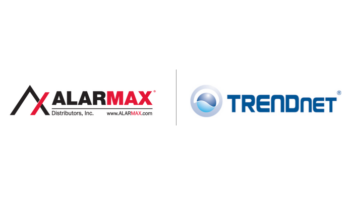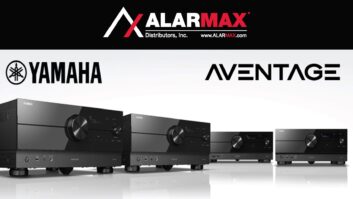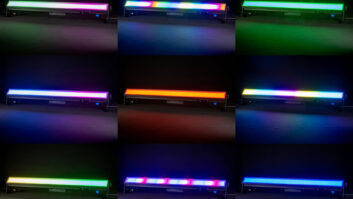IRVINE, CALIF. — If all goes according to plan, what is believed to be the first mass-market approach to TV-set-based home-AV networks should arrive as a featured application by fall in five fully integrated HDTV sets from Mitsubishi Digital Electric America.
The system, dubbed “NetCommand” (TWICE, May 21, 2001, page 1), interconnects and interoperates current and future digital audio/video components equipped with IEEE-1394 digital interfaces. It also controls many of today’s analog devices via IR blaster leads tethered to TV sets.
In unveiling the products to dealers, marketing VP Bob Perry called NetCommand a “bridge to the analog and digital worlds” and a system that “will change the business.”
The system is a bridge, he explained, because the technology is designed to interoperate most legacy devices through the TV sets’ on-screen, graphical user interface. Because Mitsubishi’s bridge approach is proprietary, Perry said, other A/V equipment manufacturers may be encouraged to seek out licensing terms so they can create their own comprehensive home network systems.
The system is special, Perry said, because it creates icons for connected 1394-network home theater devices as well as for compatible analog components such as VCRs, DVD players, A/V receivers and set-top boxes of varying types.
The GUI-based system offers device-level control from a software-based control layout patterned on the buttons of the actual hardware devices. The GUI makes it possible to control the most commonly used functions of compatible equipment from different suppliers without the need for separate remotes.
“The killer app of NetCommand is that you no longer have to memorize the wiring diagram of your system to use your products,” Perry said. “If you want to watch the VCR or the DVD, all you do is press the device button on the remote control, arrow over to the DVD on screen, and press play, and the TV does the rest. The TV switches to the right input, turns on the A/V receiver, and tells the DVD player to play.”
What makes the system different from elaborate custom home-theater control systems is cost — some custom control systems cost thousands of dollars — and the inclusion of IEEE-1394 digital device control, he said.
The digital half of the NetCommand system is based on the standardized 1394 interface and the Home A/V Interoperability (HAVi) control protocols. The system, developed using VividLogic’s FireBus IEEE-1394 and HAVi software technology, is included in the five fully integrated HDTV sets and in Mitsubishi’s first D-VHS VCR, also due this fall).
The D-VHS VCR records DTV signals — including in-the-clear HDTV programming — in undecoded bitstream form or in analog S-VHS and VHS form.
The VCR records the undecoded bitstream from the TV set and, for playback, passes the signal from the tape to the TV set’s ATSC tuner, where it is decoded and displayed on screen.
Mitsubishi uses one of the highest levels of HAVi, which is called IAV and is enhanced with “Java scripts.” This enables complete control of HAVi-enabled components and basic control of 1394-equipped products that incorporate the non-HAVi base-level AVC protocol.
The key benefit of HAVi, Perry explained, is that devices in the network send information back and forth. As a result, the on-screen graphic for a HAVi device not only shows controls but also the status of the HAVi device at any moment. This way, a user could look at a meter on the TV screen to tell how much time is left on a D-VHS cassette.
“When two devices are first connected, a digital handshake is engaged in which one device tells the other ‘this is who I am, this is what I do, this is how you control me,’ ” Perry said. “When a HAVi device is identified, a different control package is sent (from the HAVi TV set) to the device saying ‘send me a control screen,’ and the device generates the appropriate control screen for the GUI display. When an AVC [non-HAVi] product is attached, it sends control instructions, and the TV generates the appropriate control screen.”
In the case of analog equipment, the user must input the control instructions during setup, and the TV will generate the analog device’s onscreen icon and control menu.
Also included in Mitsubishi’s system is Digital Transmission Content Protection (DTCP), previously known as “5C.” The copy protection system is fully incorporated into the IEEE-1394 network “to provide unsurpassed copy protection to sensitive content, while maintaining the consumer’s fair use rights to make copies of certain materials,” a company statement said.
The television sets also offer demodulation tuning for the Quadrature Amplitude Modulation (QAM) system, which is used by most digital cable operators to tune basic digital cable channels without a cable decoder box. Mitsubishi did not include a POD (point of deployment) card slot to tune scrambled premium channels because of the still-unsettled OpenCable standard, Perry said.













